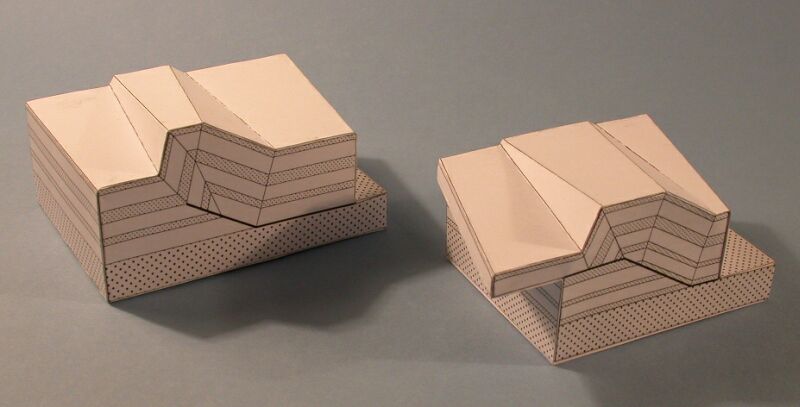These two models were designed by Gerhard Wiesmayr (email) from the Structural Processes Group Vienna, Austria. Gerhard's MSc research focussed on balancing cross-sections in the Eohimalayan Fold and Thrust belt - no doubt, his studies had an impact on model design.
The models can be made out of one single piece of paper, but we decided to split each model in two parts for easier model building. We strongly recommend that you photocopy the template on heavy A3 paper. The important steps during the building process are: (1) Glue the top surface to one cross-section. (2) Glue the top surface to the other cross-section. (3) Push the panels hard from the inside and let the glue dry. (4) Finish with the bottom. Done!

